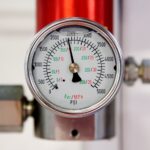Is your water heater not performing as efficiently as it used to? You might be dealing with an often overlooked issue: sediment buildup. Over time, this accumulation can drastically reduce efficiency and lead to costly repairs. Let’s dive into how a simple maintenance task like a water heater sediment flush can save you from those headaches.
- Learn why sediment buildup can be detrimental to your water heater’s lifespan and performance.
- Discover the essential tools and safety measures required for a safe, effective sediment flush.
- Follow a detailed step-by-step guide designed to extend the lifespan and efficiency of your water heater.
By the end of this article, you’ll gain practical knowledge to keep your water heater in top condition and avoid unnecessary expenses, making it an indispensable read for both DIY enthusiasts and seasoned professionals like Thomas.
Understanding the Importance of Water Heater Sediment Flush for Lifespan and Efficiency
Water heaters are essential to ensuring comfort and convenience in our homes. However, over time, they can accumulate sediment that settles at the bottom of the tank. This sediment buildup can significantly reduce the efficiency and lifespan of your water heater. Understanding the gravity of this problem is vital for taking proactive measures to prevent any complications.
When sediment collects, it often forms a barrier between the burner and the water, making the heater work harder and less efficiently. This not only results in increased energy consumption but also leads to faster wear and tear on the appliance. By performing a regular water heater sediment flush, you can avoid these issues, maintaining excellent appliance performance.
Additionally, neglecting this critical maintenance task can lead to potential damage. The sediment can cause overheating, and in worst-case scenarios, may result in cracks or leaks. As a result, you might face unexpected expenses on costly repairs or even the need to replace the entire unit. Incorporating a sediment flush into your maintenance routine ensures your water heater operates seamlessly and lasts longer.
Preparing for a Water Heater Sediment Flush
Before diving into the process of a water heater sediment flush, it’s crucial to prepare adequately. This ensures that the task is executed safely and efficiently, minimizing any risks or mishaps. Start by gathering the necessary tools—typically, you’ll need a garden hose, a bucket, and a wrench.
Beyond assembling tools, it’s important to consider safety precautions. Begin by turning off the power supply to the water heater. For electric water heaters, switch off the power at the circuit breaker. For gas heaters, set the thermostat to ‘pilot’ mode. This step is crucial in preventing any accidents or injuries during the maintenance process.
Next, allow time for the heater to cool down. Working with hot water can be dangerous, so it’s wise to exercise patience. Additionally, ensure you have sufficient space and access to your water heater to carry out the task comfortably. A well-thought-out preparation phase sets the stage for a successful sediment flush, ultimately boosting the efficiency and lifespan of your water heater.
Step-by-Step Guide to Water Heater Sediment Flush: Extend Lifespan and Efficiency
Performing a sediment flush on your water heater is a straightforward process that can greatly enhance the unit’s lifespan and efficiency. By taking the following detailed steps, you can help ensure your water heater operates optimally and continues to deliver reliable hot water. This procedure is not only a proactive maintenance measure but also a way to prevent common issues associated with sediment buildup.
Step 1: Turn Off the Power and Water Supply
Begin by turning off the power to your water heater. If it’s an electric heater, switch off the circuit breaker. For gas units, set the thermostat to the pilot position to avoid triggering the heating elements during the flush.
Next, turn off the cold water supply valve located at the top of the heater. This step is crucial to prevent water from continuously entering the tank during the flushing process.
Step 2: Attach a Hose to the Drain Valve
Locate the drain valve near the bottom of the tank and carefully attach a garden hose. Ensure the hose is directed towards a safe drainage area, preferably outside or into a floor drain, to avoid water spillage and potential damage to surroundings.
Step 3: Drain the Tank
Open the drain valve to allow water to start flowing out. Depending on the amount of sediment, the initial water might be discolored. Let the water flow until it runs clear, indicating that most of the sediment has been removed. Exercise caution as the draining water can be hot.
Step 4: Flush with Cold Water
Once the tank is emptied, reopen the cold water supply valve to introduce fresh water into the tank. This action will help stir up any remaining sediment at the bottom. Continue flushing until the expelled water appears clear again.
Step 5: Close Valves and Power Reconnection
After achieving a clear drainage, close the drain valve tightly to avoid any leaks. Disconnect the hose. Then, fully open the cold water supply valve to refill the tank. It is essential to ensure that the tank is completely filled before restoring power to avoid damage.
For electric units, switch the circuit breaker back on. Gas heaters can be returned to their original thermostat setting. Carefully follow operational safety procedures during this step.
By following this comprehensive guide, regular sediment flushing becomes a manageable task that significantly contributes to water heater efficiency and longevity. Consistently applying these best practices can prevent sediment-related issues, reduce the risk of malfunction, and enhance energy efficiency, ultimately saving on repair costs and prolonging your water heater’s service life.
Water Heater Sediment Flush FAQ
Why is sediment flushing important for water heaters?
Sediment flushing is crucial because it removes accumulated debris that can decrease efficiency and damage the water heater.
How often should a water heater be flushed?
It’s recommended to flush your water heater at least once a year to prevent buildup and maintain efficiency.
What are the signs that my water heater needs flushing?
Signs include rumbling noises, reduced heating efficiency, and fluctuating water temperatures.
Can I perform a sediment flush myself?
Yes, with proper preparation and safety precautions, most homeowners can flush their water heater sediment themselves.
What tools are needed for a sediment flush?
- Garden hose
- Plumber’s wrench
- Bucket
Does flushing sediment save money?
Yes, by maintaining efficiency and preventing potential damage, it can reduce energy costs and avoid expensive repairs.





